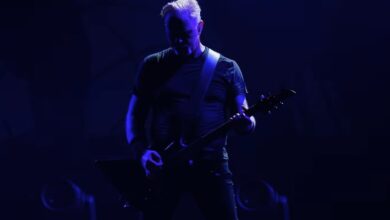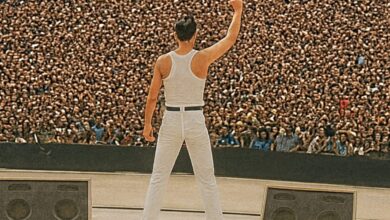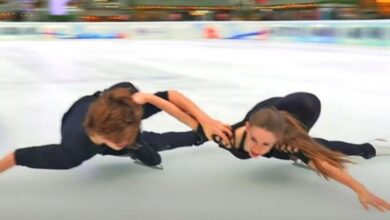KISS Unleashed Raw Power with a Seven-Minute “She” on The Midnight Special (1975)
That stage in Burbank didn’t look like much at first—just risers, cables, and a few cameras blinking red—but the second KISS kicked into “She,” the room snapped to attention like a power station coming online. Taped at NBC Studios on April 1, 1975, and later broadcast that summer, the performance felt less like TV and more like a controlled detonation: Paul Stanley’s rhythm carving the air, Gene Simmons’ bass stomping like heavy machinery, Peter Criss laying down a pocket that rumbled the floor, and Ace Frehley skating above it all with chrome-bright lines. It was the moment KISS proved they could compress arena heat into a living-room rectangle without losing a degree.
“She” has always been a shapeshifter in the KISS catalog—part street-blues, part proto-metal, part swaggering downtown stomp—and the Midnight Special cameras caught that alchemy in close-up. The opening pulse is almost patient, as if the song is sizing up the room, then the dynamics start to flex: a clipped riff here, a vocal feint there, the band moving like gears meshing under load. TV favored tight frames and steady shots; KISS turned those constraints into focus, allowing every pick attack and hi-hat sizzle to register like punctuation. The result felt cinematic, not because of edits, but because the band used space the way directors use silence.
Part of the thrill was seeing a group notorious for spectacle submit to the intimacy of long takes. No pyro, no blood, no oversized stage—just four players playing. The camera hung on Paul long enough to catch him “conducting” the front line with little flicks of the wrist. It lingered on Gene’s right hand, each downstroke spring-loaded and deliberate. Peter’s snare had the crack of concrete splitting, but you could also hear his micro-pushes shaping the band’s forward motion. And then there was Ace, head tilted in that familiar orbit, letting notes ring into the rafters before tugging them back with sly vibrato.
What separates this “She” from club tapes and later arena versions is the way it breathes on television. You can feel the song’s weight—thick, blues-toned, New York tough—but you can also hear the oxygen between parts. That “negative space” lets the riff snap and the vocal sneer without turning to mush on ’70s broadcast speakers. It’s the paradox of the performance: compressed to fit a screen yet somehow bigger than the room, a city block of attitude funneled through a single lens.
The taping itself has taken on a mythic glow among fans. KISS laid down four songs that day—“Deuce,” “She,” “C’mon and Love Me,” and “Black Diamond”—and the show later chose which ones to air. In hindsight, putting “She” in the first wave was a masterstroke; it wasn’t just flash, it was feel, proof the band could smolder as convincingly as they could explode. The decision framed KISS not as a novelty but as a machine with torque, a band with a second gear that television rarely allowed rock groups to show.
When “She” hit air on July 11, 1975, it arrived as part of a two-song blast alongside “Deuce,” with “Black Diamond” saved for a later episode. That staggered reveal kept KISS on a slow burn across the second half of the year, a serialized cliffhanger that rewarded viewers for tuning back in. It was clever television and even smarter bandcraft: let the first wave spark curiosity, then circle back with a finale. The rollout gave the impression of momentum, as if KISS were already too big to fit in a single night.
“She” itself unspooled like a late-night prowl—half menace, half strut. Paul’s rhythm chopped the bars into clean, hard windows; Gene’s bass lines didn’t just anchor the harmony, they drove the narrative forward; Peter’s tom work gave the verses a stalking gait. And then came the elastic center of the song: Ace’s tone, edged and luminous, turning simple figures into hooks and side-streets into vistas. It’s the kind of playing that convinces you a band isn’t just tight—they’re telepathic.
One reason the clip keeps resurfacing is length: the Midnight Special version stretches past the radio-friendly frame and lets the band cook. You can hear phrases bloom, riffs get tossed back and forth like hot iron, the groove tightening as the camera leans in. That seven-minute sprawl doesn’t feel indulgent; it feels necessary, like the song needs the extra real estate to show how many rooms it contains. It’s a blueprint for how to be expansive on TV without losing the plot.
There’s also the choreography nobody wants to admit they love. In the harsh honesty of studio lights, those small synchronized steps and stance-switches look less like gimmickry and more like muscle memory—a band writing in cursive with their bodies. The moves don’t distract; they sign the performance. Even freeze-framed, you can tell where the downbeat lands by how the four silhouettes arrange themselves inside the shot. That’s stagecraft refined to a language.
The audience, famously tamer than a roaring arena, becomes a ghost character in the clip. You feel them more than you hear them, which makes the band’s conviction even starker. KISS perform as if the room stretches to a hockey-rink horizon, as if the risers are really catwalks and the ceiling won’t hold. That psychological scale is what television rarely captured in rock back then: the sense that a song could bully a room into becoming a venue twice its size. “She” does that in real time.
Mid-broadcast, the camera surrenders to Ace. It’s not just a solo; it’s a thesis. He doesn’t shred for speed; he phrases for lift, turning bends into neon arcs and letting sustain do the talking. The tone is bright without brittleness, saturated but never swampy—a streetlight-on-chrome sound that defined a generation of guitar daydreams. When fans call his style “spacey,” they’re really hearing the confidence to leave orbit and still land on the one.
A detail that deepens the legend: plenty of archival roundups and fan historians have confirmed the exact timeline—taped April 1, “Deuce” and “She” aired July 11, “Black Diamond” turned up later—so when you watch, you’re not just seeing a performance; you’re watching a carefully sequenced public introduction. That’s why the clip feels both raw and curated, like a live wire coiled into a frame. It’s Kisstory written with broadcast ink.
The longer arc matters too. 1975 was the hinge year—Dressed to Kill fresh, Alive! imminent—and The Midnight Special became the conduit between rumor and proof. “She” works as a receipt: here is the band, no stadium camouflage, still sounding enormous. In a decade where image and sound were learning to dance together, KISS turned that partnership into a competitive advantage, and this taping shows the choreography in embryo.
Rewatching “She” today lands differently because the world lost Ace Frehley in October 2025. News of the fall, the brain injury, and finally his passing at seventy-four rippled through the rock community like a dropped amp—sudden, heavy, resonant. Go back to the clip after hearing the news and you’ll hear those gliding vibratos as a kind of benediction, a message sent forward to a future none of us wanted to meet. It’s not that the solo changed; we did.
The tributes that followed—bandmates, peers, the long river of fans—underscored what the clip already told you: Ace’s fingerprints are all over the KISS sound, and all over the instrument’s vocabulary. The Spaceman persona made sense because the notes always seemed to arrive with a comet’s tail, bright and inevitable. On The Midnight Special, you can actually watch the myth click into place: a tilt of the head, a raised eyebrow, a line that climbs and refuses to come down until the room is ready.
What makes the performance special, finally, is how many contradictions it reconciles. It’s heavy yet spacious, theatrical yet honest, television yet unmistakably live. “She” is the vehicle, but the clip is really about electricity—how four people can generate it, shape it, and send it down a wire to strangers they’ll never meet. In 1975, that felt like a revolution. In 2025, it feels like a keepsake, a document of a band learning how big they could be and a guitarist whose signal still reaches us, clear as a broadcast call sign in the night.
And if you want a single image to carry away, make it this: the camera inches toward Ace as he leans back into the pocket, the riff yawning open beneath him like a lit runway. For a breath, the room seems to brighten just from the note he’s holding. Then Peter snaps the kit shut, Gene drives the last accents, Paul cuts the air with one last downstroke—and the frame freezes on a band that knew exactly what it was. Television didn’t tame them. It introduced them.





